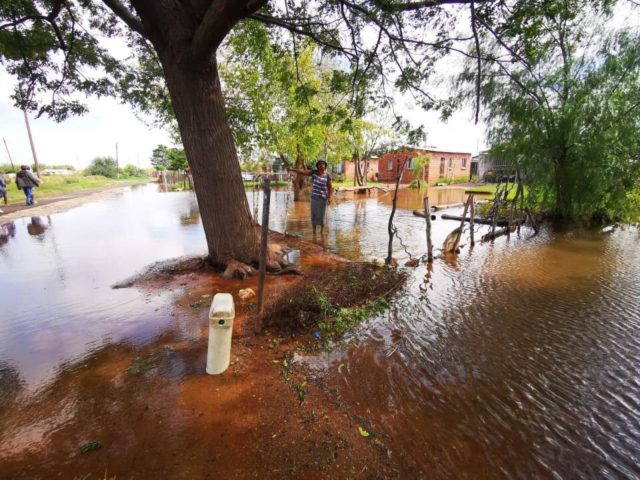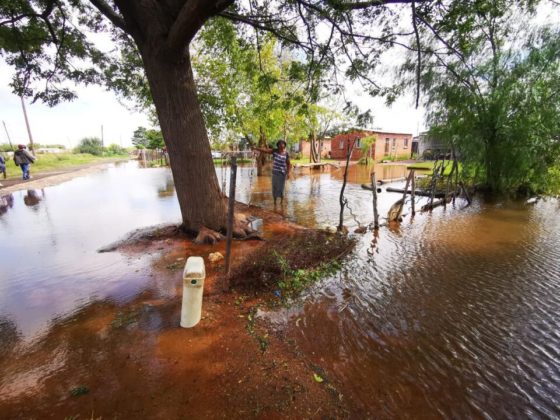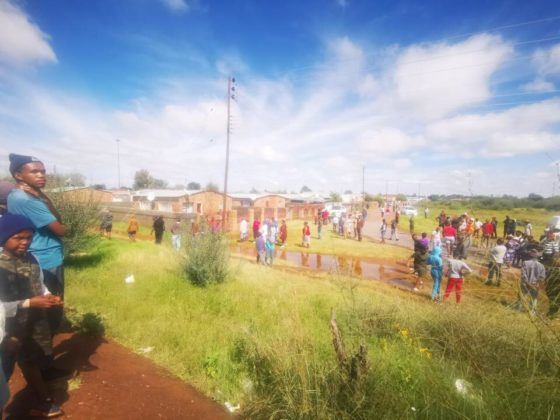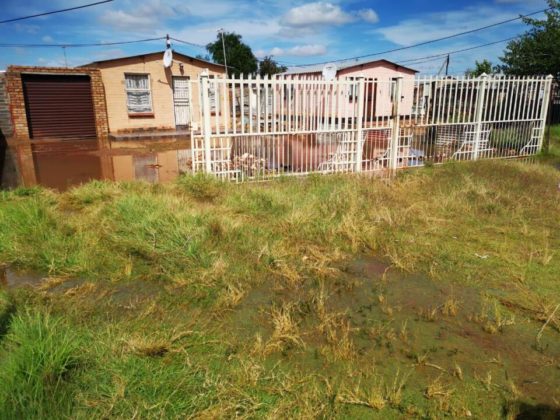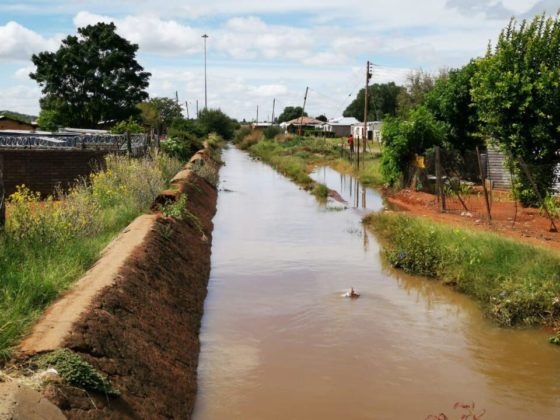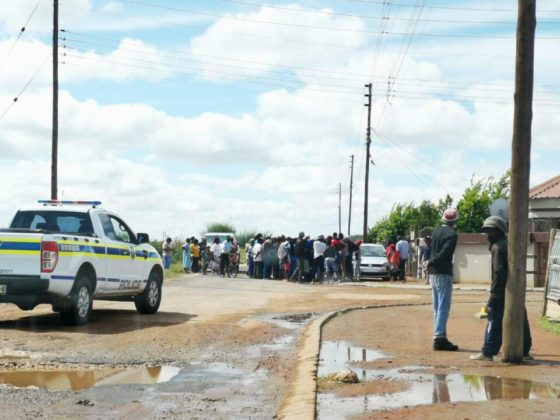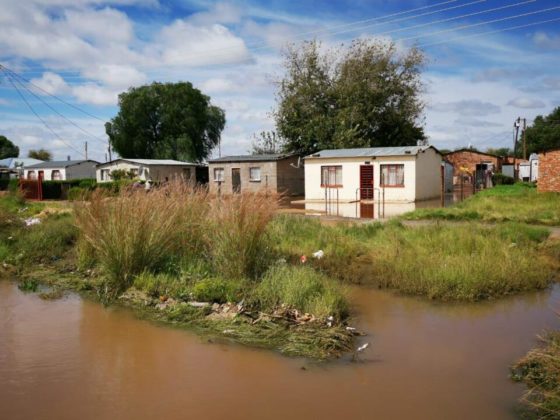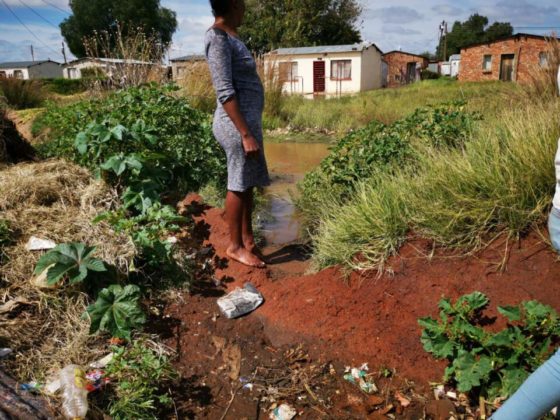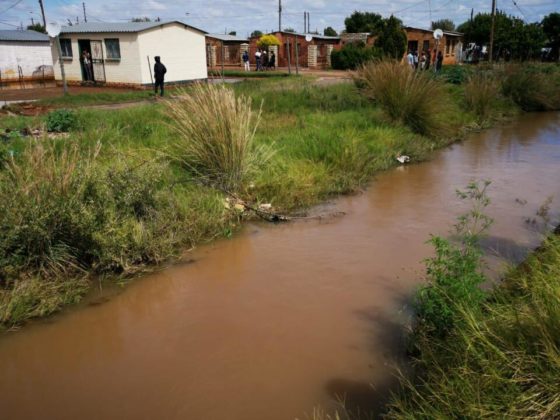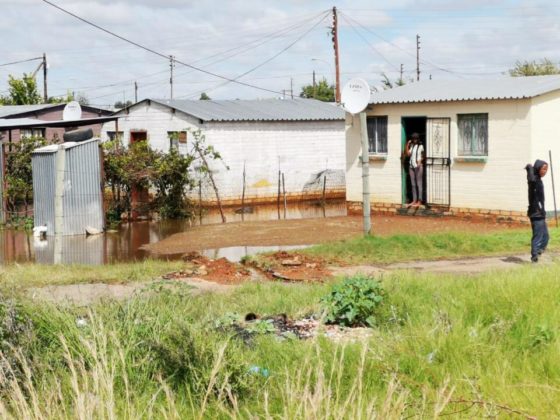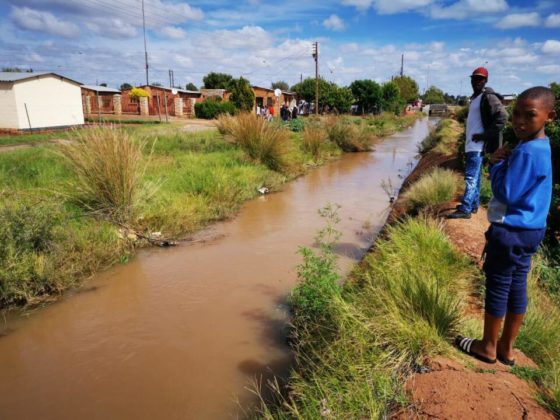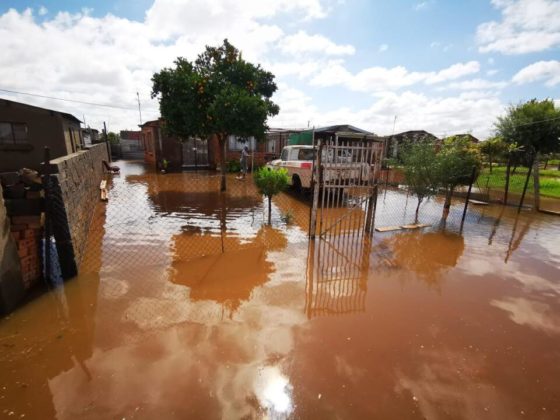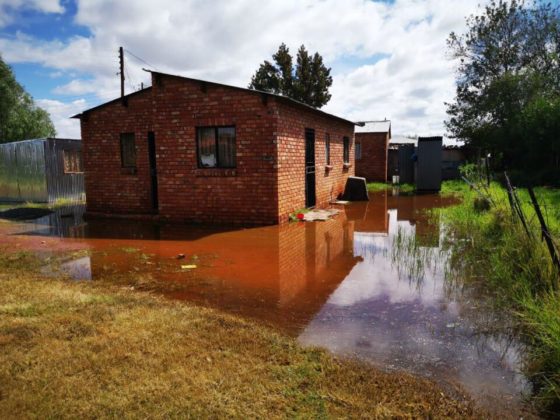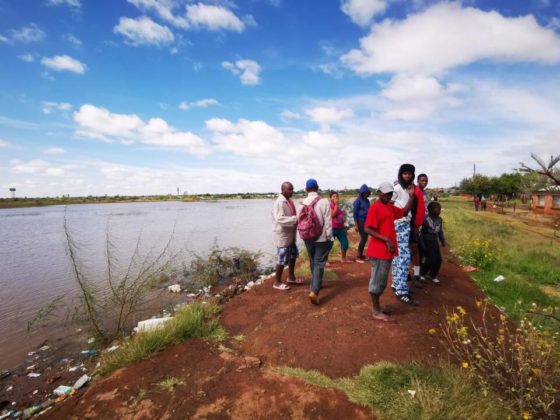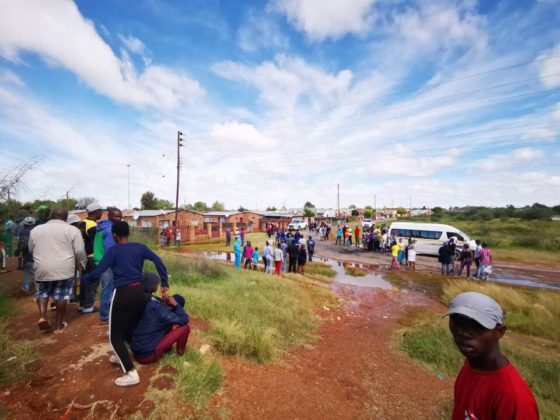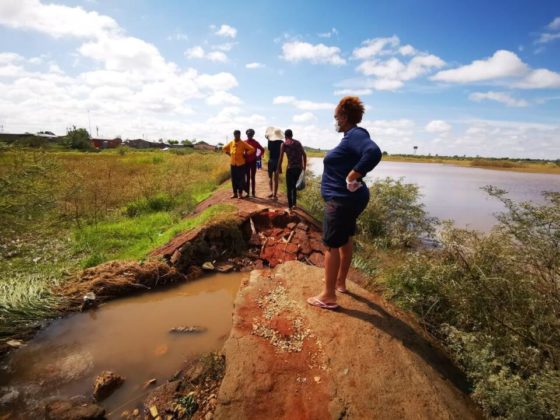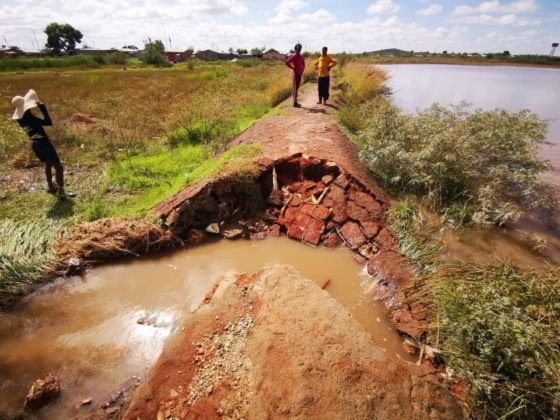The areas worst affected are those closest to the dam, especially the Kagisho and Tlhageng areas, including Tidimalo Road, Club 2000 Unit 1, Kageng, Kathisho and John Daka.
AROUND 200 low-cost houses have been flooded after the Kagisho retention dam burst its walls at several spots following Friday night’s heavy downpour in Kimberley.
The areas worst affected are those closest to the dam, especially the Kagisho and Tlhageng areas, including Tidimalo Road, Club 2000 Unit 1, Kageng, Kathisho and John Daka.
Residents, many of whom were forced to wade through the rivers of water, stood around in a group despondently on Saturday morning, assessing the damage caused when the walls of the dam broke, resulting in a deluge of water flooding into their homes, destroying their furniture and possessions.
Many called for the Sol Plaatje Municipality executive mayor, Patrick Mabilo, to address them.
“Disaster management was here to assess the situation but they were unable to provide us with a way forward,” the residents said.
“The municipality has promised to provide sand since last year already but we are still waiting. We do not have any means of trying to divert the water from coming into our homes,” the residents pointed out. “Each time there are heavy rains, the dam bursts its banks and our houses are flooded.”
Among those whose possessions were destroyed included a young woman, who looks after her three siblings. Holding the youngest, a baby of two years, on her hip, the young woman said all their possessions had been destroyed.
“There is nothing left. All our furniture was destroyed as the water reached about knee height.”
She added that her seventeen-year-old brother was forced to sleep on a table. “He turned over and fell into the water.”
She said that at around 9pm on Friday night they gave up and she tried to find shelter for her siblings. “We went to the neighbour but her house was also flooded.” Eventually she was forced to walk through the rain with her two-year-old sister on her back to her blind mother, who lives in about 500m away.
“Today we have had no food and we are still waiting for food parcels.”
The residents, many of whom are elderly people living alone, pointed out that this was not the first time that the dam’s walls had collapsed during heavy rains.
“This is not the first time that the dam’s walls have broken and the Sol Plaatje Municipality is doing nothing to find a more permanent solution.”
In the Sol Plaatje Municipality’s 2017/18 budget, R20 million was made available during the medium-term revenue and expenditure framework (MTREF) to upgrade the dam. At the time the mayor stated that “this project is long overdue and will be prioritised as well”.
Councillor and chairperson of the municipality’s human settlements committee, Ronnie Morwe, who was on the scene on Saturday morning, described the scene as a “natural disaster”. “No one could have foreseen what has happened. However, the dam belongs to the Sol Plaatje Municipality so we have to take responsibility.”
He added that the municipality had dispatched a team that was going door to door to identify those households affected. “There are about 200 households that have been affected,” he stated.
Morwe indicated that the plan was to provide accommodation at a local high school to those affected. “It depends on the individual if they want to leave their homes. Many are afraid that if they leave their possession will be stolen.” Morwe added that it would be difficult to provide policing at this stage.
He pointed out further that officials from the Department of Social Development were also on the scene and would provide food parcels once the number of households affected had been determined.
“We will have a meeting with all stakeholders at 3pm again this afternoon.”
Morwe pointed out meanwhile that the money budgeted in 2017/18 had been spent on upgrading the stormwater canal in Nobengula Street. “It was hoped that this would alleviate the pressure at Kagisho Dam. However, it did not work and we need to go back to the drawing board and relook at the situation.”
He stated though that the dam was capable of holding the water. “The problem is that the canal leading from the dam is blocked by residents throwing all sorts of things into the canal. We have even found fridges in the canal. As a result, the water cannot flow freely in the canal and blocks up in the dam, creating pressure.”
Municipal spokesperson Sello Matsie said the local authority would start with repair work on the dam on Sunday. “Work will entail stabilising and closing the current cracks in the wall of the dam.”
He added that the disaster management section of the municipality would assist with alternative accommodation for those families seeking shelter and those severely affected by the flooding.
“Long-term plans to avert future flooding as a result of the dam include the upgrading of the Tlhageng dam.”
Matsie said that this was part of the current stormwater upgrading project in Galeshewe. “The designs for the upgrading are under way and the physical implementation will start in the new financial year (July 2020).”
Matsie added that the Galeshewe11 stormwater upgrade project was under way and was progressing well. “This project has improved the stormwater infrastructure in some areas of Galeshewe and is ongoing.”
He stated that, unfortunately, despite numerous cleaning operations the canal downstream was often the target of illegal dumping. “This results in the flow of the water being blocked, especially during heavy rains, like that experienced on Friday.”

